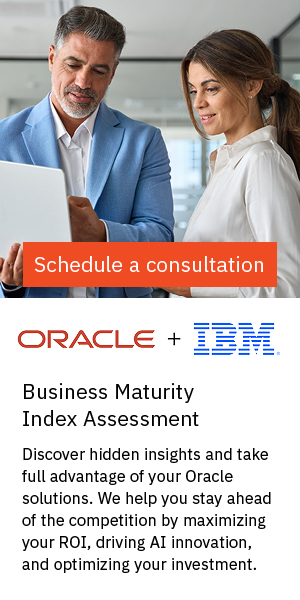Emerging technologies and worldwide volatility have thrown the role of the CFO into disarray. Now, these leaders must transcend traditional accounting and reporting functions. Modern CFOs are now strategic leaders, tasked with driving business value, optimising performance, and navigating a complex technological landscape.
Central to achieving these objectives within an organisation’s core Enterprise Resource Planning (ERP) system are two interconnected pillars: robust integration and the proactive maximisation of the ERP’s inherent capabilities. By establishing seamless data flows across various systems and fully leveraging the functionalities embedded within their ERP, CFOs can unlock unprecedented levels of efficiency, gain critical insights, and ultimately steer their organisations toward sustained growth and profitability.
Integration Unlocks Value
The significance of integration cannot be overstated in the contemporary business ecosystem. As organisations increasingly adopt specialised applications and cloud-based services to address specific needs, the ERP system, while often serving as the central nervous system, must effectively communicate and exchange data with these disparate platforms.
The speed of decision-making has accelerated dramatically, necessitating real-time access to information from across the organisation. Whether it’s sales data, supply chain information, or customer relationship management details, the ability to consolidate and analyse this information within the ERP, facilitated by tight integrations, empowers CFOs and other C-suite leaders to make informed decisions on demand.
“If you look at CFOs, CIOs, CROs, they’re all looking to make decisions effectively on-demand. The ability to push information in real-time and extract information real-time means that whenever the C suite needs to make a decision, they can have that information on demand at their fingertips. Every time there’s a crisis, and you can argue tariff wars and trade uncertainty is one of those, then it merits more information being captured, analysed and then understood,” said Bob Stark, Global Head of Enablement at Kyriba.
Having integration ready on day one of any significant system implementation or upgrade, such as a move to cloud platforms like SAP S/4HANA or Oracle Cloud, is essential. Without these connections, organisations risk operating in silos, leading to delayed insights, inaccurate reporting, and ultimately, an inability to react swiftly to market changes or internal performance indicators.
Key data points, such as cash flow and liquidity, are particularly pressing in today’s landscape of economic uncertainty. Integration with banking systems and other financial platforms provides CFOs with a real-time view of their cash position, enabling proactive management of liquidity and informed decisions regarding investments and borrowing.
However, achieving effective integration is not without its challenges. One significant obstacle is the lack of a clear understanding of the organisation’s data strategy. Without a defined vision for what data needs to be connected, why, and with what frequency, it becomes exceedingly difficult to prioritise integration efforts and ensure that APIs and other connectivity tools are utilised effectively. Prioritisation itself can also be a hurdle, as organisations juggle numerous competing initiatives and may not fully recognise the strategic importance of robust integration.
Moreover, the openness of the systems that need to be integrated with the ERP plays a crucial role. If these external platforms lack open APIs (Application Programming Interfaces), building and maintaining integrations can become complex and time-consuming, potentially leading to technical debt, which can hinder scalability and future upgrades.
The concept of technical debt is also relevant within the ERP itself, particularly concerning customisations. While some specialised functions may seem necessary, excessive customisation can impede integration efforts and complicate future upgrades. Generally, integrations should leverage pre-built connectors whenever possible, ideally within a low-code or no-code environment, to minimise the effort and risk associated with bespoke interfaces that may not be sustainable over time.
Leveraging the Power of Composable Architecture
The concept of composable architecture is also presented as a trend that CFOs should be aware of. Composable architecture, often interchangeable with cloud-native architecture or microservices, represents a modular approach consisting of loosely coupled microservices or headless systems deployed together.
One of the primary advantages of a composable ERP for CFOs is the enhanced agility in financial operations. Businesses can adapt much more quickly to changing business models, such as evolving global tax compliance requirements, by swapping out specific components rather than overhauling the entire system.
Composable ERPs have also shown the ability to deliver and improve real-time insights. This is crucial for CFOs who need up-to-date information to make informed decisions, as highlighted by the need for real-time data for effective decision-making in today’s accelerated business environment.
“You tend to get much cleaner, more timely financial data with composable architectures. It reduces long term costs and tech debt because traditional ERPs come with a high degree of customization and high degree of maintenance costs. The footprint with traditional, monolithic ERPs is much heavier, so it’s more expensive for you to operate and run. With composable architecture, you’re only deploying the services that your business needs, and not deploying the whole monolith, even though you only need maybe 30% of that. It has a much lighter footprint,” said Dinakar Hituvalli, CTO and SVP of product development at Deltek.
Reduced long-term costs and technical debt are also significant benefits. Traditional ERPs often accumulate a high degree of customisation and maintenance costs, with heavier footprints. Composable architectures allow organisations to deploy only the services they need, resulting in a lighter footprint and lower operational expenses.
Ultimately, a composable architecture future-proofs the finance technology stack. Its cloud-native nature allows for the easier integration of new and emerging capabilities without disrupting core processes. This is particularly relevant in the context of rapidly evolving technologies like AI, which is a significant trend reshaping financial decision-making. The ability to plug in new AI-powered functionalities without major system overhauls is a key advantage for CFOs looking to leverage these advancements.
In essence, composable ERP architecture provides CFOs with a more agile, insightful, cost-effective, scalable, and future-ready foundation for their financial operations compared to traditional monolithic systems. This modular approach empowers finance teams to adapt to change, gain timely insights, and leverage new technologies more effectively, ultimately contributing to better strategic decision-making and value creation for the organisation.
ERPs are Empowered By Connection and Flexibility
For modern CFOs to effectively navigate the complexities of today’s business landscape and drive maximum value within their ERP systems, focusing on robust integration is essential. By establishing seamless data flows through strategic integration initiatives, CFOs can gain the real-time insights necessary for agile decision-making.
The evolving role of the CFO as a strategic partner with technology leaders, coupled with a commitment to data-driven decision-making and a forward-looking perspective on technological advancements, will be critical in harnessing the full potential of ERP systems and positioning organisations for continued success in the years to come.
The interconnection between a strong data strategy and the effective implementation of AI underscores the fundamental importance of a well-integrated data environment as the bedrock for future innovation and value creation within the ERP ecosystem.
Businesses also need flexibility to maintain a competitive advantage in times of volatility. Composable ERPs can offer users the ability to manage operations reliably and efficiently. By allowing users to mix and match different software programs, organisations can find the ideal form for their tech stack to take.






